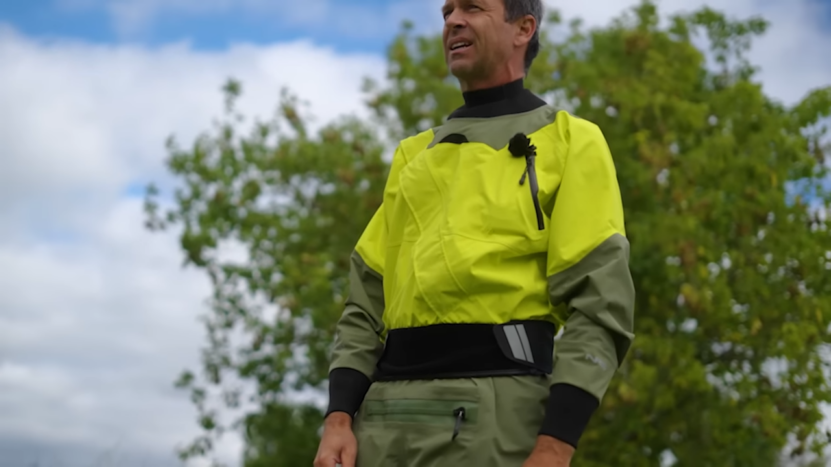Kayaking requires specialized gear to ensure a safe and enjoyable experience.
One piece of gear that I highly recommend for cold-weather kayaking is the dry suit. It acts as a barrier between you and the elements, keeping you dry in conditions where getting wet can be hazardous.
Dry suits are essential when the water temperature drops below 60 degrees Fahrenheit or when the combined water and air temperature dips below 120 degrees Fahrenheit.
They provide an optimal balance of comfort and protection, enhancing the joy of kayaking while minimizing the risks associated with cold water exposure.
Purpose and Functionality
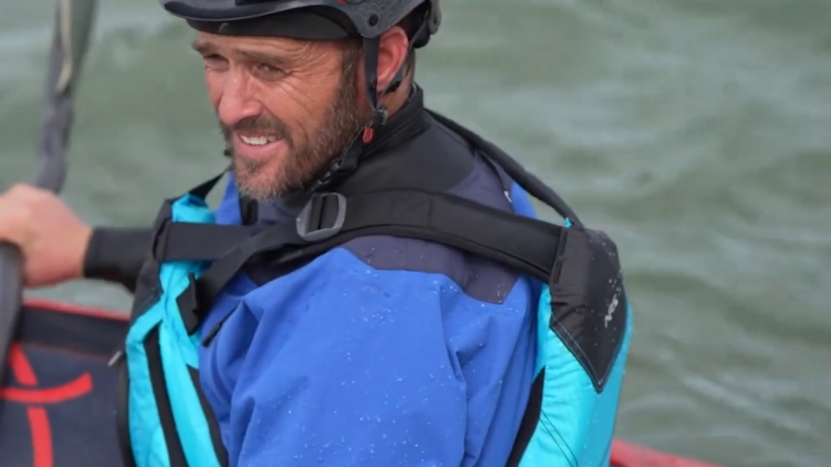
A dry suit’s primary role is to keep water out entirely.
Unlike wetsuits, which rely on a thin layer of water trapped between the suit and your skin to maintain body temperature, dry suits provide a waterproof barrier.
This design keeps you dry, allowing you to wear insulating layers underneath to stay warm.
Moreover, dry suits are generally made from materials like Gore-Tex or nylon. Gore-Tex is renowned for its waterproof and breathable qualities, making it an excellent choice for those seeking high performance in various conditions.
On the other hand, nylon offers similar waterproof characteristics but at a more affordable price point, albeit with slightly compromised breathability.
Key Features
Gaskets
Gaskets around the neck, wrists, and ankles are vital to a dry suit’s effectiveness. These gaskets form a tight seal that prevents water ingress. They must strike a perfect balance between being snug enough to keep water out and comfortable enough to avoid irritation or impaired circulation.
- Latex Gaskets: Known for their excellent sealing properties, latex gaskets are a popular choice. However, they may cause allergies in some individuals. In such cases, neoprene gaskets, particularly around the neck, can be a suitable alternative.
Zippers
The zippers on dry suits need to be robust and waterproof. Essential for maintaining the integrity of the suit, these zippers should also be user-friendly to ensure that putting the suit on and taking it off isn’t a cumbersome task. A well-designed zipper system significantly enhances the usability and functionality of the dry suit.
- Heavy-Duty Zippers: Typically, dry suits feature heavy-duty, waterproof zippers that provide a secure seal. Their durability and ease of operation are crucial, given their frequent use.
Fit and Comfort
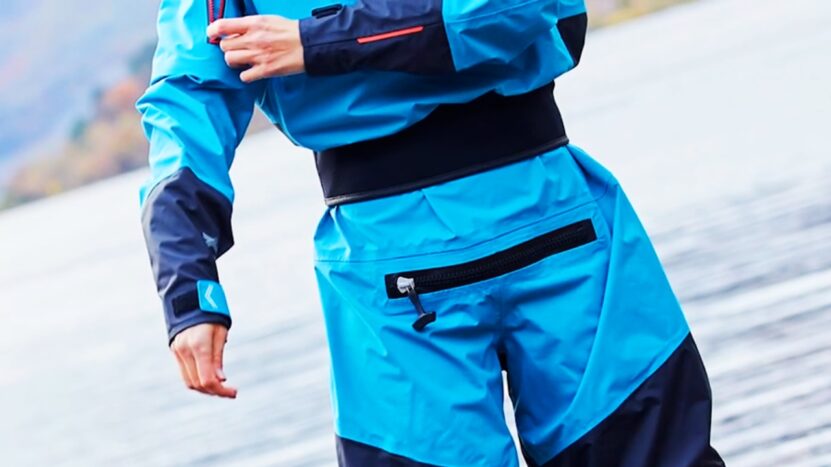
A properly fitting dry suit is indispensable for both comfort and effectiveness. The suit should allow enough room for wearing insulating layers underneath while maintaining enough flexibility for paddling.
- Layers: The space inside the suit must be adequate to accommodate layers of clothing that keep you warm. Insulating layers should remain dry to function correctly.
- Movement: The fit should not be so tight that it restricts movement. Flexibility is essential for effective paddling and overall comfort.
Reinforced Areas
Dry suits with reinforced knees and seats offer increased durability, especially for activities like kayaking where these areas can experience considerable wear and tear. Given that the average kayak speed can vary between 3 to 5 miles per hour, this durability is crucial for extended trips.
- Longevity: These reinforcements can prolong the life of the dry suit, making them a practical feature for anyone planning significant use in more rugged conditions.
Stretching Latex Gaskets
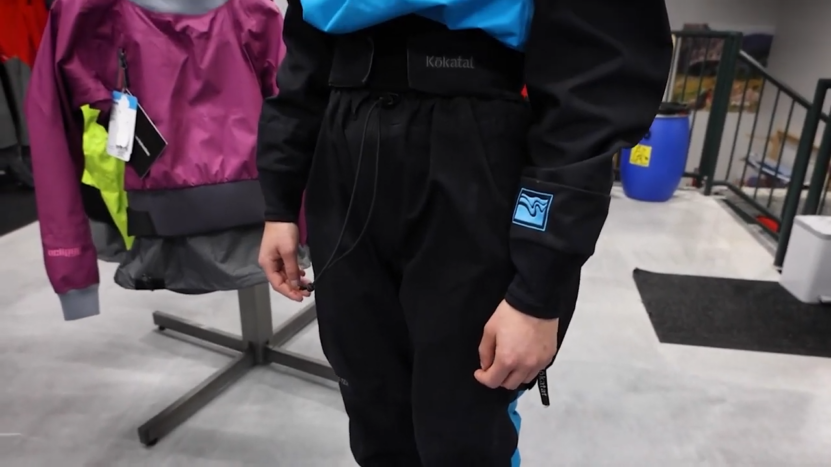
Latex gaskets, while effective, can often be tight straight out of the box. Stretching or trimming them may be necessary for a comfortable fit.
Stretching Process
- Choose a Suitable Object: To stretch the gaskets, find an object slightly bigger than your neck or wrist. This might be something like a jar or a rounded piece of wood.
- Gradual Stretching: Insert the object into the gasket and leave it there for several hours or overnight. This gradual stretching process helps the gasket loosen without compromising its integrity.
Trimming Gaskets
If stretching doesn’t provide the desired comfort, trimming is an option. However, this should be done cautiously.
- Marking: Use a marker to outline where you plan to cut. Only trim a small amount initially to avoid over-cutting.
- Cutting: Use sharp scissors and make small, even cuts. Test the fit after each trim to ensure you do not overdo it.
Buying Considerations
When selecting a dry suit for kayaking, there are a few key factors to keep in mind:
Material
- Gore-Tex: Ideal for its high waterproof and breathable properties, suitable for challenging and variable conditions.
- Nylon: A more affordable option that still provides waterproof protection but may not be as breathable.
Seals
- Latex vs. Neoprene: While latex offers superior sealing, neoprene can be an option for those with material sensitivities.
Zippers
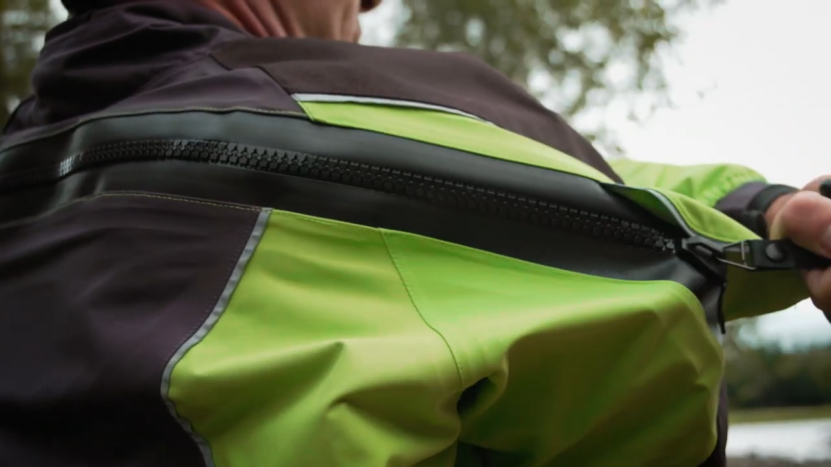
- Heavy-duty: Ensure the zippers are sturdy and easy to operate, as they play a critical role in maintaining the suit’s waterproof properties.
Fit
- Room for Layers: Make sure the suit has enough room to wear insulation layers comfortably yet remains snug enough to prevent excess bulk.
- Freedom of Movement: The suit should not restrict your paddling motion or add unnecessary discomfort.
Conclusion
A dry suit is an essential piece of kayaking gear, especially in colder climates or unpredictable weather conditions.
By focusing on key features such as materials, gaskets, zippers, and fit, I can select a dry suit that ensures both safety and comfort during my kayaking adventures.
Considering whether I need scupper plugs on my kayak can further enhance my overall experience by preventing water from entering the cockpit.
Investing in a high-quality dry suit will not only enhance my kayaking experience but also allow me to explore waters with greater confidence, regardless of the temperature.

